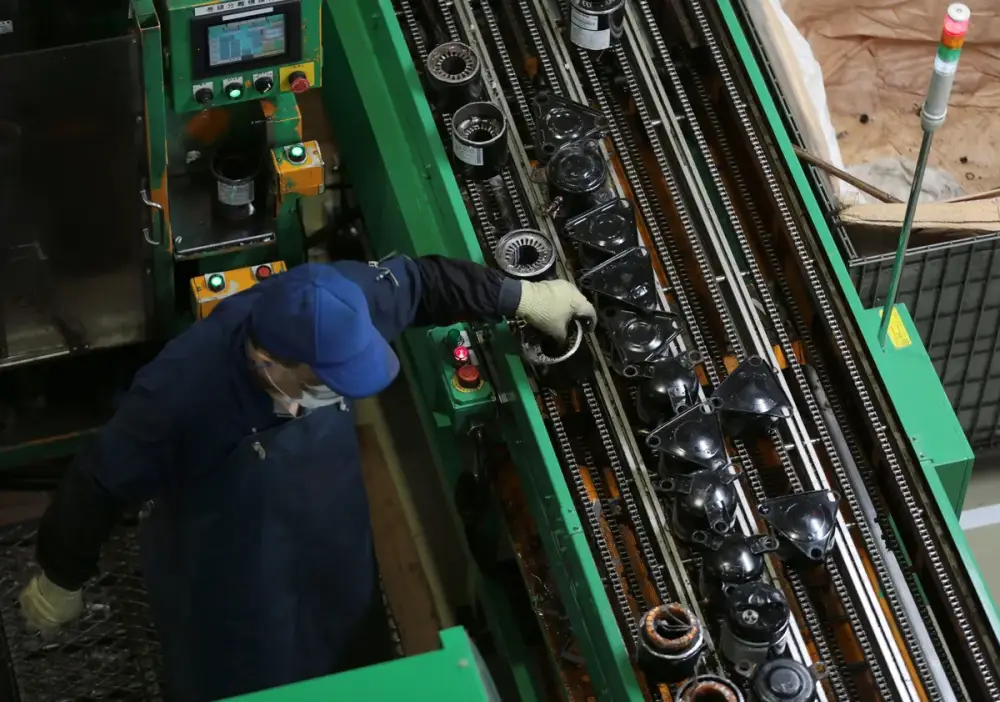
Trung Quốc siết đất hiếm Ấn Độ: CEO Sona cảnh báo chỉ ngoại giao mới cứu được ngành xe điện
-
CEO Vivek Vikram Singh của Sona BLW Precision Forgings Ltd. khẳng định rằng giải pháp ngắn hạn duy nhất để giải quyết khủng hoảng thiếu hụt nam châm đất hiếm là thông qua đột phá ngoại giao với Trung Quốc.
-
Trung Quốc hiện chiếm ưu thế tuyệt đối trong chuỗi cung ứng nam châm đất hiếm – nguyên liệu quan trọng trong sản xuất xe điện và điện thoại di động.
-
Kể từ khi Trung Quốc áp dụng hạn chế xuất khẩu vào đầu tháng 4, Ấn Độ đã không thể nhập khẩu nam châm đất hiếm, theo ông Vinnie Mehta – Tổng giám đốc Hiệp hội các nhà sản xuất linh kiện ô tô Ấn Độ.
-
Sona – một trong những nhà sản xuất mô-tơ truyền động lớn nhất Ấn Độ với sản lượng 220.000 mô-tơ trong năm ngoái – đã chứng kiến sản lượng giảm đều từ tháng 5 đến tháng 7 vì các giấy phép nhập khẩu bị Trung Quốc giữ lại từ tháng 6.
-
Để ứng phó, Sona đang phát triển nam châm không sử dụng đất hiếm cho các động cơ nhỏ. Tuy nhiên, giải pháp này cần từ 6 đến 9 tháng để hoàn thiện và sẽ phải đánh đổi giữa chi phí và hiệu suất.
-
Về lâu dài, công ty có kế hoạch sản xuất nam châm đất hiếm ngay tại Ấn Độ, với điều kiện được hưởng ưu đãi từ chính phủ.
-
Chính phủ Ấn Độ đang xem xét chương trình khuyến khích kéo dài 7 năm trị giá tới 290 triệu USD nhằm thúc đẩy sản xuất nam châm đất hiếm trong nước.
-
Sona cùng với Vedanta Group và JSW Group đang cân nhắc tham gia chương trình này, với chiến lược hợp tác với nhà sản xuất nam châm để trở thành khách hàng lớn nhất.
📌 Sona BLW cảnh báo ngành xe điện toàn cầu đang đối mặt với khủng hoảng nam châm đất hiếm nghiêm trọng do hạn chế xuất khẩu từ Trung Quốc. Sản lượng tại Sona đã giảm từ tháng 5 và giải pháp ngắn hạn duy nhất là khơi thông ngoại giao với Bắc Kinh. Công ty cũng đang phát triển nam châm không dùng đất hiếm (mất 6–9 tháng) và chờ chính phủ hỗ trợ để sản xuất trong nước. Ấn Độ đang triển khai gói kích thích trị giá 290 triệu USD để giảm phụ thuộc Trung Quốc.
https://www.bloomberg.com/news/articles/2025-07-11/china-diplomacy-key-to-easing-rare-earth-crisis-sona-ceo-says
China Diplomacy Key to Easing Rare Earth Crisis, Sona CEO Says
July 11, 2025 at 9:38 AM UTC
A diplomatic breakthrough with China is the only short-term fix for easing the shortage of rare-earth magnets, a top executive at one of the largest auto components maker said, as the exports curbs by the East Asian nation chokes the production of electric vehicles.
“In the short term, unless we have a kind of rapprochement with China and get magnet supply flowing, there are limited options for damage control,” Vivek Vikram Singh, chief executive officer, Sona BLW Precision Forgings Ltd. told Bloomberg News.
The curbs underscore China’s dominant position in the global supply chain for this crucial raw material used in making cars to mobile phones. It’s forcing companies worldwide to re-evaluate sourcing strategies as well as prodding governments to accelerate efforts for local production of rare earth magnets.
Indian automakers are facing conditions tougher than others in importing rare earth magnets from China, Bloomberg News reported in June. Since China’s export restrictions in early April, Indian importers of rare earth magnets have been unable to get any supplies from that nation, Vinnie Mehta, director general, Automotive Components Manufacturers’ Association of India said on Tuesday.
Sona, which produced 220,000 traction motors in India last year, is one of the largest manufacturers of this vital component that powers the wheels of electric vehicles.
The company’s monthly production has steadily declined from May through July, according to Singh, as its licenses for magnet supplies are stuck with Beijing since June.
Rare-Earth Free Magnets
Sona, meanwhile, has begun working on developing rare-earth-free magnets for smaller motors. “We are working day and night,” Singh said, but the shift involves trade-offs in efficiency or cost, new motor designs, casings, and extensive testing.
Developing this alternative will take six to nine months at the minimum, he added.
Read More: India Plans to Kickstart Rare-Earth Output to Cut China Reliance
In the longer term, the company aims to secure its supply chain by producing rare-earth magnets locally but this depends on availability of government incentives. “It is not a business that can be done sub-scale and without incentives,” he said.
Sona plans to partner with a magnet producer, offering to be their major customer.
India is planning a seven-year long incentive program of as much as $290 million to spur indigenous manufacturing of rare earth magnets. Sona, as well as the Vedanta Group and JSW Group are mulling participating in this program, Bloomberg News reported earlier this week.
Thảo luận
Follow Us
Tin phổ biến



